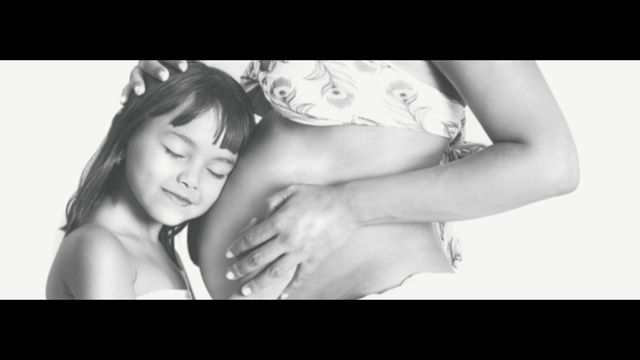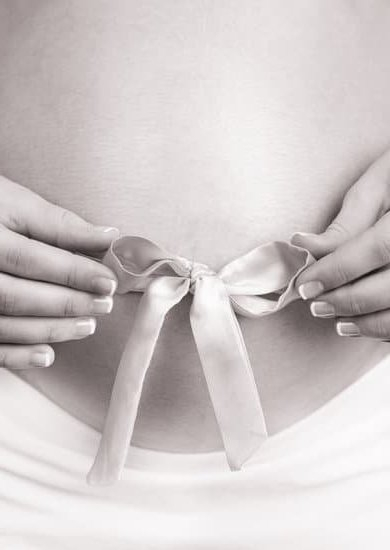How soon do you notice breast changes in pregnancy? Pregnancy is a beautiful journey filled with physical and emotional transformations. One of the earliest signs that a woman may be pregnant is changes in her breasts. Understanding these early indicators can help women navigate through this unique experience with ease and confidence.
During pregnancy, the body undergoes significant hormonal shifts to support the growth and development of the baby. These hormonal changes play a crucial role in preparing the breasts for lactation and breastfeeding. As a result, many women experience noticeable changes in their breasts as early as the first few weeks of pregnancy.
In the following sections, we will delve into the biology behind breast changes during pregnancy, common alterations to expect in the first trimester, and factors that can influence when these changes occur. By gaining a better understanding of these processes, women can learn to embrace and manage the transformations happening within their bodies during this special time.
The Biology Behind Breast Changes During Pregnancy
During pregnancy, a woman’s body undergoes significant changes to prepare for the growth and development of a baby. One of the most noticeable changes occurs in the breasts, which play a crucial role in nourishing the newborn after birth. Understanding the biology behind these breast changes can help expectant mothers better cope with these transformations.
Here are some key points about the biology behind breast changes during pregnancy:
- Hormonal Changes: The primary reason behind breast changes during pregnancy is hormonal fluctuations, particularly an increase in estrogen and progesterone levels. These hormones stimulate the growth and development of milk ducts and milk-producing cells in the breasts, leading to an increase in size and sensitivity.
- Blood Flow: During pregnancy, there is increased blood flow to the breasts, resulting in a fuller and heavier feeling. This increased blood flow also contributes to the temporary enlargement of the nipples and areolas.
- Lobules Development: As pregnancy progresses, specialized cells called lobules begin to develop within the breasts. These lobules are responsible for producing milk once the baby is born. At the same time, alveoli – small sacs within the lobules – start forming to store milk until it is released during breastfeeding.
Overall, these biological changes work together to ensure that a woman’s body is ready to provide essential nutrition for her baby after delivery. Understanding these processes can help alleviate concerns about breast changes during pregnancy and appreciate their importance in preparing for motherhood.
Common Breast Changes to Expect in the First Trimester
During the first trimester of pregnancy, many women experience a variety of significant changes in their breasts as their bodies prepare for the upcoming arrival of a baby. These changes are primarily due to hormonal shifts and increased blood flow in the body.
One of the most common breast changes to expect during this stage is breast tenderness or soreness. This discomfort can range from mild to severe and is often one of the earliest signs of pregnancy that women notice.
Changes in Size and Shape
Another noticeable change that many pregnant women experience in their breasts during the first trimester is an increase in size and fullness. The hormonal changes associated with pregnancy can cause breasts to become larger and more sensitive as early as two weeks after conception. Additionally, some women may notice changes in the shape of their breasts, with nipples becoming more prominent or darker in color.
Veins and Montgomery’s Tubercles
Pregnancy hormones can also lead to visible changes in the veins on the surface of the breasts, making them more pronounced than usual. In addition, small bumps called Montgomery’s tubercles may appear on the areolas. These sebaceous glands can become more raised and noticeable during pregnancy due to increased oil production. While these changes may be uncomfortable or unexpected for some women, they are all considered normal aspects of pregnancy.
How Soon Do Breast Changes Typically Occur After Conception?
During pregnancy, many changes occur in a woman’s body to prepare for the growth and development of the baby. One of the earliest signs that a woman might notice is changes in her breasts. These changes can start as early as one to two weeks after conception, even before a missed period. Understanding how soon breast changes typically occur after conception can help women recognize these early signs of pregnancy.
Early Signs of Breast Changes
One of the first signs of pregnancy is often breast tenderness or soreness. This can be attributed to hormonal changes in the body, particularly an increase in estrogen and progesterone levels. Women may also notice that their breasts feel fuller and heavier than usual. The areolas-the area around the nipples-may darken and become more prominent as well.
Other Common Breast Changes
In addition to tenderness, women may experience other common breast changes such as increased sensitivity, itchiness, or tingling sensations. Some women might notice their breasts increasing in size due to hormonal fluctuations and preparing for milk production during breastfeeding postpartum.
Variances in Timing
It is important to note that the timing of breast changes during pregnancy can vary among women. While some women may notice these changes within the first few weeks after conception, others might not experience them until later in the first trimester.
Factors such as individual hormone levels, genetic predisposition, and overall health can influence when these changes occur. If you do not notice any breast changes early on but suspect you are pregnant based on other symptoms or missed periods, it is recommended to take a pregnancy test and consult with your healthcare provider for confirmation.
Factors That Can Influence the Timing of Breast Changes
During pregnancy, many women experience significant changes in their breasts as a result of hormonal fluctuations. While some women may notice these changes within the first few weeks after conception, others may not experience any noticeable differences until later in their pregnancy. The timing of when breast changes occur can vary from woman to woman and can be influenced by several factors.
One factor that can influence the timing of breast changes in pregnancy is individual hormone levels. The hormones estrogen and progesterone play a key role in preparing the breasts for lactation. Women with higher levels of these hormones may notice breast changes sooner than those with lower levels. Additionally, women who have had previous pregnancies may experience breast changes earlier due to their bodies being more sensitive to hormonal fluctuations.
Another factor that can impact the timing of breast changes is genetics. Some women may have a genetic predisposition to experiencing certain symptoms earlier or later in pregnancy, including breast changes. If other female relatives experienced early or delayed breast changes during their pregnancies, it is possible that you may follow a similar pattern.
Furthermore, overall health and lifestyle habits can also play a role in when breast changes occur during pregnancy. Factors such as diet, exercise, stress levels, and pre-existing medical conditions can all affect hormone levels and contribute to the timing of breast changes. Staying healthy and maintaining a balanced lifestyle throughout your pregnancy can help regulate hormone levels and potentially alleviate discomfort associated with these changes.
| Factors Influencing Timing of Breast Changes | Impact |
|---|---|
| Hormone Levels | Determine sensitivity to hormonal fluctuations. |
| Genetics | Predisposition based on familial patterns. |
| Health and Lifestyle | Affects hormone regulation and potential discomfort. |
Tips for Managing Breast Changes and Discomfort During Pregnancy
During pregnancy, women may experience a variety of changes in their breasts as their bodies prepare for breastfeeding and the growth of the baby. These changes can occur as early as the first trimester and may continue throughout the pregnancy. Understanding how to manage these breast changes and associated discomfort can help expectant mothers feel more comfortable during this transformative time.
One common way to address breast changes and discomfort during pregnancy is to invest in a well-fitting maternity bra. As the breasts increase in size and sensitivity, a supportive and properly fitted bra can make a significant difference in comfort. It is recommended to choose bras with wider straps, soft materials, and adjustable sizing to accommodate fluctuations in breast size.
In addition to wearing the right bra, another helpful tip for managing breast changes during pregnancy is to avoid harsh soaps or detergents when washing bras or clothing that comes into contact with the breasts. Opting for fragrance-free, gentle cleansers can help prevent irritation or exacerbation of any skin sensitivity that may accompany breast changes. Staying hydrated and moisturizing the skin around the breasts can also contribute to overall comfort and health.
| Managing Breast Changes | Effective Tips |
|---|---|
| Invest in a well-fitting maternity bra | Choose wider straps, soft materials, adjustable sizing |
| Avoid harsh soaps or detergents | Opt for fragrance-free, gentle cleansers |
| Stay hydrated and moisturize | Helps with overall comfort and skin health |
When to Consult a Healthcare Provider About Abnormal Breast Changes
During pregnancy, it is common for women to experience various changes in their breasts as their bodies prepare for the arrival of a new life. While some breast changes are expected and considered normal, it is important to be aware of what could be deemed abnormal. Knowing when to consult a healthcare provider about unusual breast changes can help ensure the best possible care for you and your baby.
One key indicator that may warrant a visit to your healthcare provider is the presence of severe pain or tenderness in your breasts that goes beyond the typical discomfort experienced during pregnancy. If you notice any lumps, bumps, or unusual discharge from your nipples, these could also be signs of a problem that requires medical attention. Changes in breast size, shape, or texture that are significantly different from what is considered normal for you should not be ignored.
Additionally, if you experience redness, swelling, or heat around your breasts that is not related to typical hormonal fluctuations during pregnancy, it is advisable to seek medical advice promptly. Any sudden and drastic changes in one breast compared to the other should also be brought to the attention of your healthcare provider. By being proactive about reporting abnormal breast changes early on, you can ensure timely intervention if necessary and maintain optimal health throughout your pregnancy journey.
Conclusion
Pregnancy is a unique journey that brings about significant changes in a woman’s body, including noticeable changes in the breasts. As discussed in this article, understanding the early signs of pregnancy and the biology behind breast changes can help prepare expecting mothers for what to expect. While every woman’s experience may vary, common breast changes in the first trimester include tenderness, swelling, and darkening of the nipples.
Many women often wonder: how soon do you notice breast changes in pregnancy? Typically, these changes can occur as early as one to two weeks after conception. However, various factors such as hormonal fluctuations, genetics, and individual differences can influence the timing of these changes. It is essential for pregnant women to pay attention to their bodies and seek guidance from healthcare providers if they have any concerns or notice abnormal breast changes.
In conclusion, embracing the changes in your body during pregnancy is a crucial aspect of this transformative journey. With proper knowledge and support, women can navigate through the physical transformations with more confidence and ease.
Remember that each woman’s pregnancy experience is unique, so it’s important to listen to your body, stay informed, and reach out for medical advice when needed. Embracing these changes with grace and self-care can help expecting mothers enjoy this remarkable time in their lives to the fullest.
Frequently Asked Questions
How Soon Do Breasts Get Tender When Pregnant?
Breasts may start to feel tender and sore as early as one to two weeks after conception, usually around the time of a missed period. This tenderness is often one of the first signs of pregnancy and may continue throughout the first trimester.
How Soon Do You Notice Breast Changes in Pregnancy Forum?
Breast changes in pregnancy forums can be noticed by women as early as a few weeks after conception. Some women may observe an increase in breast size, nipple sensitivity, or darkening of the areolas during this time. These changes vary from woman to woman but are common symptoms experienced during early pregnancy.
Which Part of the Breast Hurts in Early Pregnancy?
During early pregnancy, it is common for women to experience pain or tenderness in the outer part of the breasts near the armpits. This discomfort is typically due to hormonal changes that prepare the body for breastfeeding later on in pregnancy. The pain may range from mild to moderate and can vary in intensity from woman to woman.

Welcome to my fertility blog. This is a space where I will be sharing my experiences as I navigate through the world of fertility treatments, as well as provide information and resources about fertility and pregnancy.





